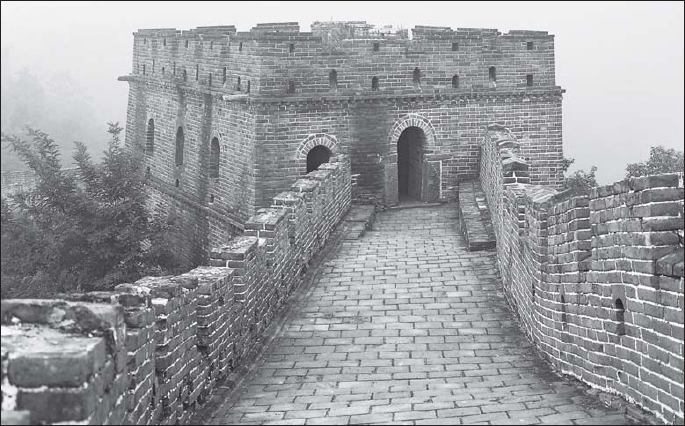
In 1778 the eminent lexicographer Dr Samuel Johnson urged his friend James Boswell to visit the Great Wall of China, because his children would then have a lustre reflected upon them from being the offspring of a man who had gone to view that unique edifice. It is a sentiment shared today by thousands of pathetic elderly gentlemen like the present author who embarrass their children by wearing T-shirts that proclaim ‘I walked the Great Wall of China’, even though the total length restored sufficiently to walk on is a mere 35km out of the 4,500km that remain. The rest is wilderness, not counting another 2,200km that have disappeared without trace, and it is a brave man who attempts to explore beyond the restored sections.
Nevertheless, a visit to the Great Wall is a uniquely exciting experience, and I cannot imagine anyone being disappointed. A guided tour is probably the best option for most visitors. Most trips to China take in a visit to the Great Wall, usually Badaling or Mutianyu, but walking tours visiting several different sections are also available. An interesting alternative is to join one of William Lindesay’s ‘Wild Wall Tours’, which feature camping by the Great Wall or staying in other accommodation close by. In choosing a set tour the visitor should look very carefully at the itinerary provided. There will usually be one day in Beijing, which is well worth doing, but any tour that takes in Shanhaiguan, Huangyaguan, Jinshanling or Simatai will give a good mixture of styles along the Ming Great Wall. I travelled on such a tour with the excellent Travelsphere, whose organization was superb and whose itinerary gave a great deal of wall for one’s money.

A tower looms out of the mist on the Great Wall at Mutianyu.
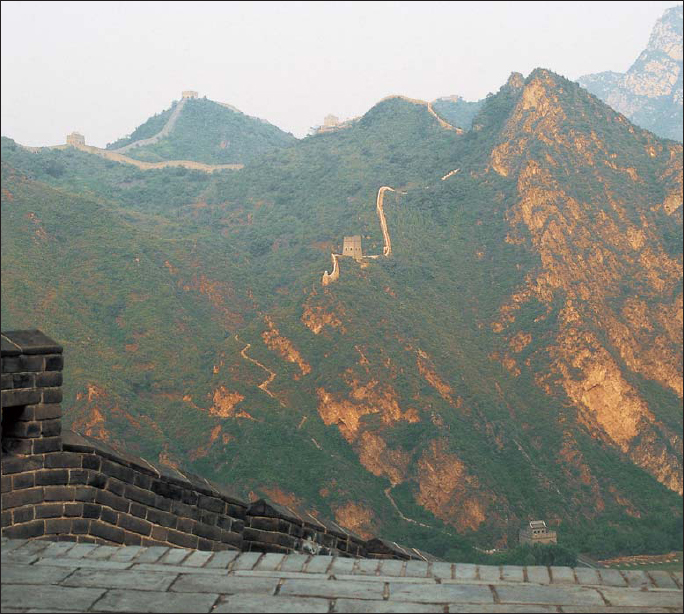
The yellow cliff of Huangyaguan, seen from the Great Wall across the valley as the evening sun sets.
With every year that passes travel in China gets easier and the Great Wall becomes more accessible, so any tourist advice in these pages will be out of date almost before it is printed. I will therefore confine myself to a brief survey of the most important sections of the Great Wall and suggest that the reader consults the latest editions of the Rough Guide or Lonely Planet volumes on China, or do an internet search to find the latest information on the accessibility of the more remote sections.
The Old Dragon’s Head is very attractively situated on the coast. The barracks complex adjacent to it has been rebuilt and houses historical displays. Shanhaiguan combines city walls and the Great Wall in a fascinating ensemble. The First Pass Under Heaven is very impressive, and although its western side has been landscaped to within an inch of its life, it makes a dramatic contrast with the gloomy inner courtyard. There is a small museum within the gate tower, while the recently refurbished Great Wall Museum down the road is excellent and provides a fine introduction to the subject. The walk up to the Yanshan Mountains provides a superb view of the wall making its way to the sea. Some itineraries include a gimmicky boat trip across the Panjiakou Reservoir to see the edges of the submerged Xifengkou Great Wall.

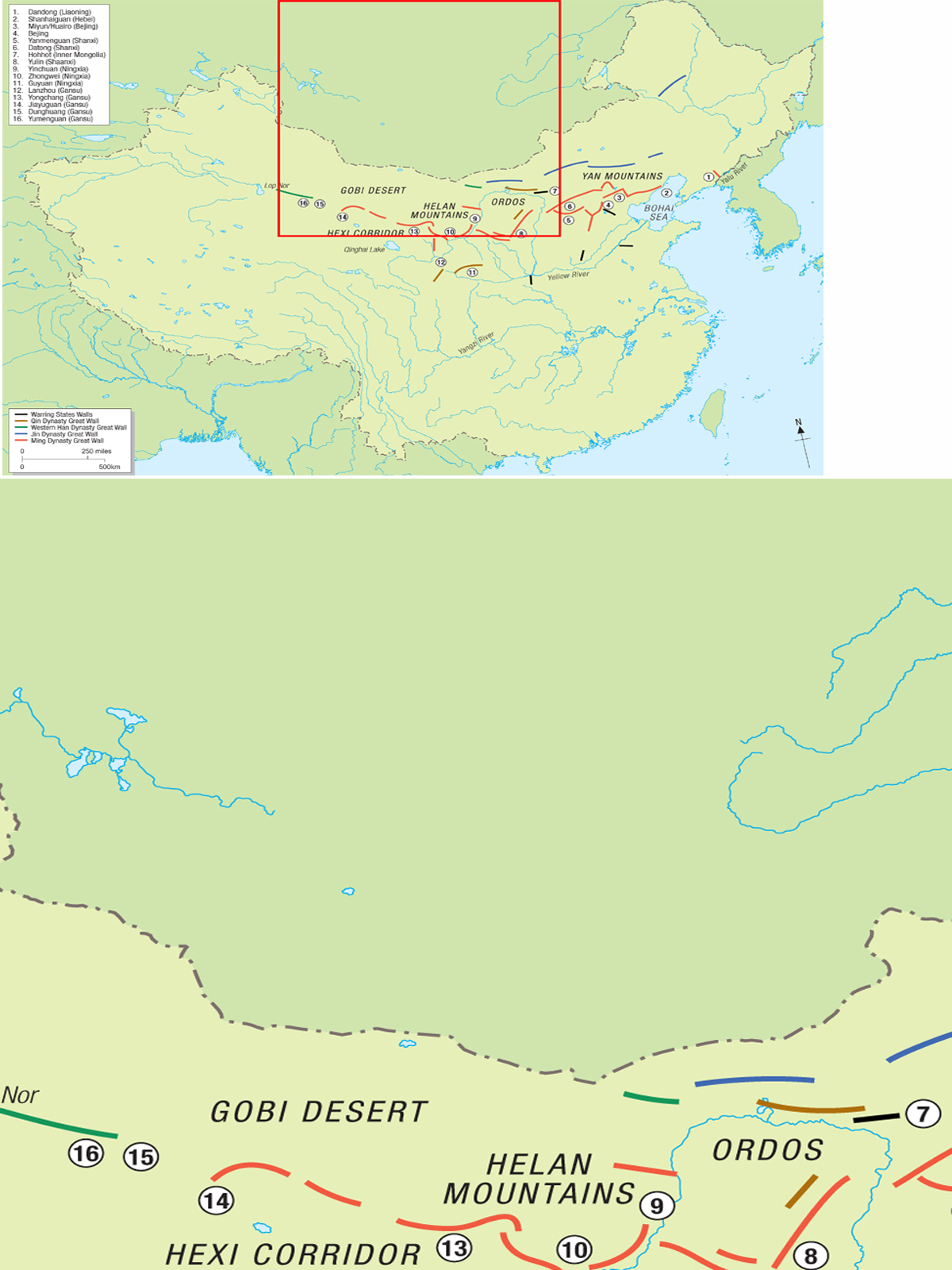
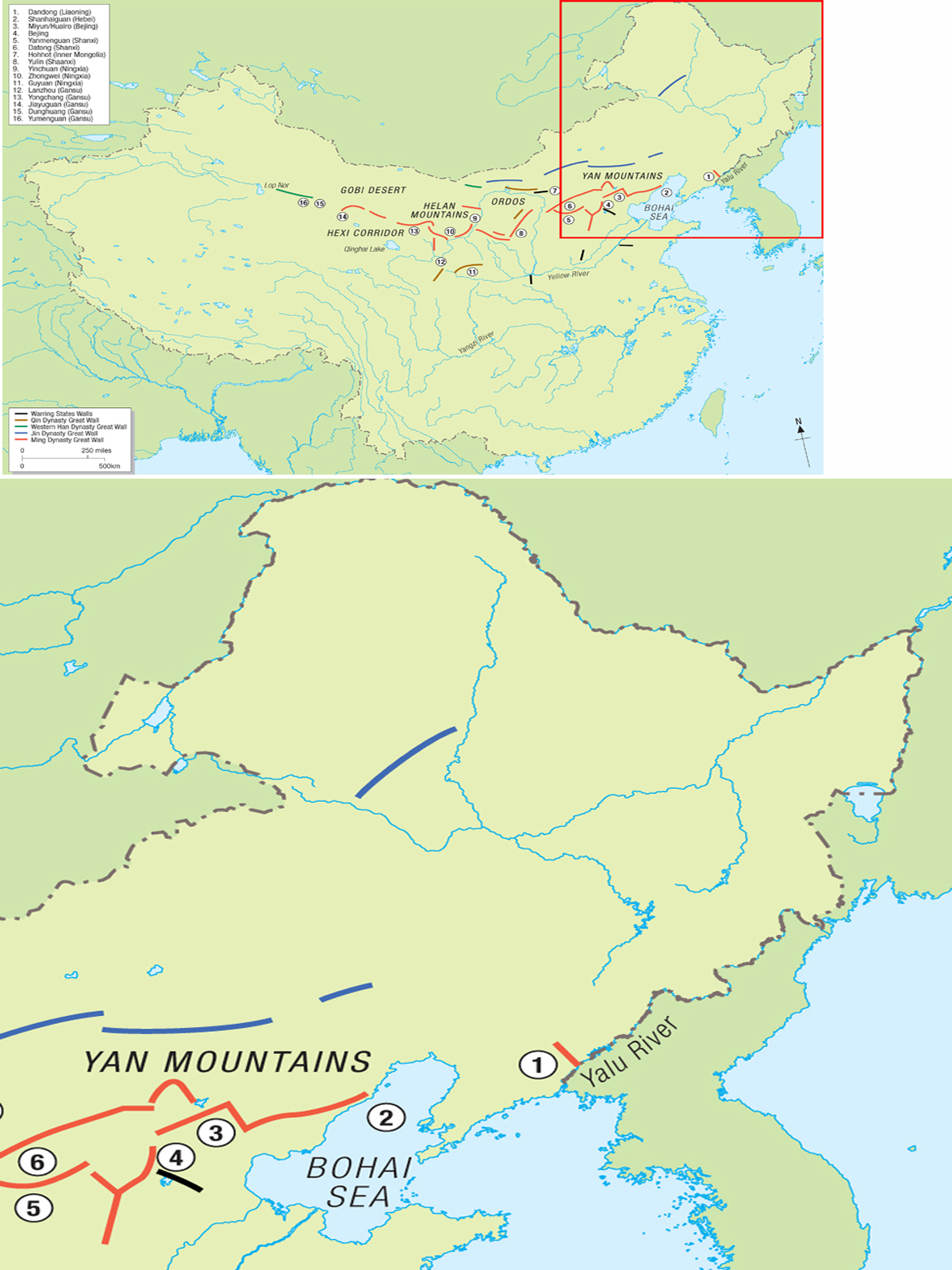
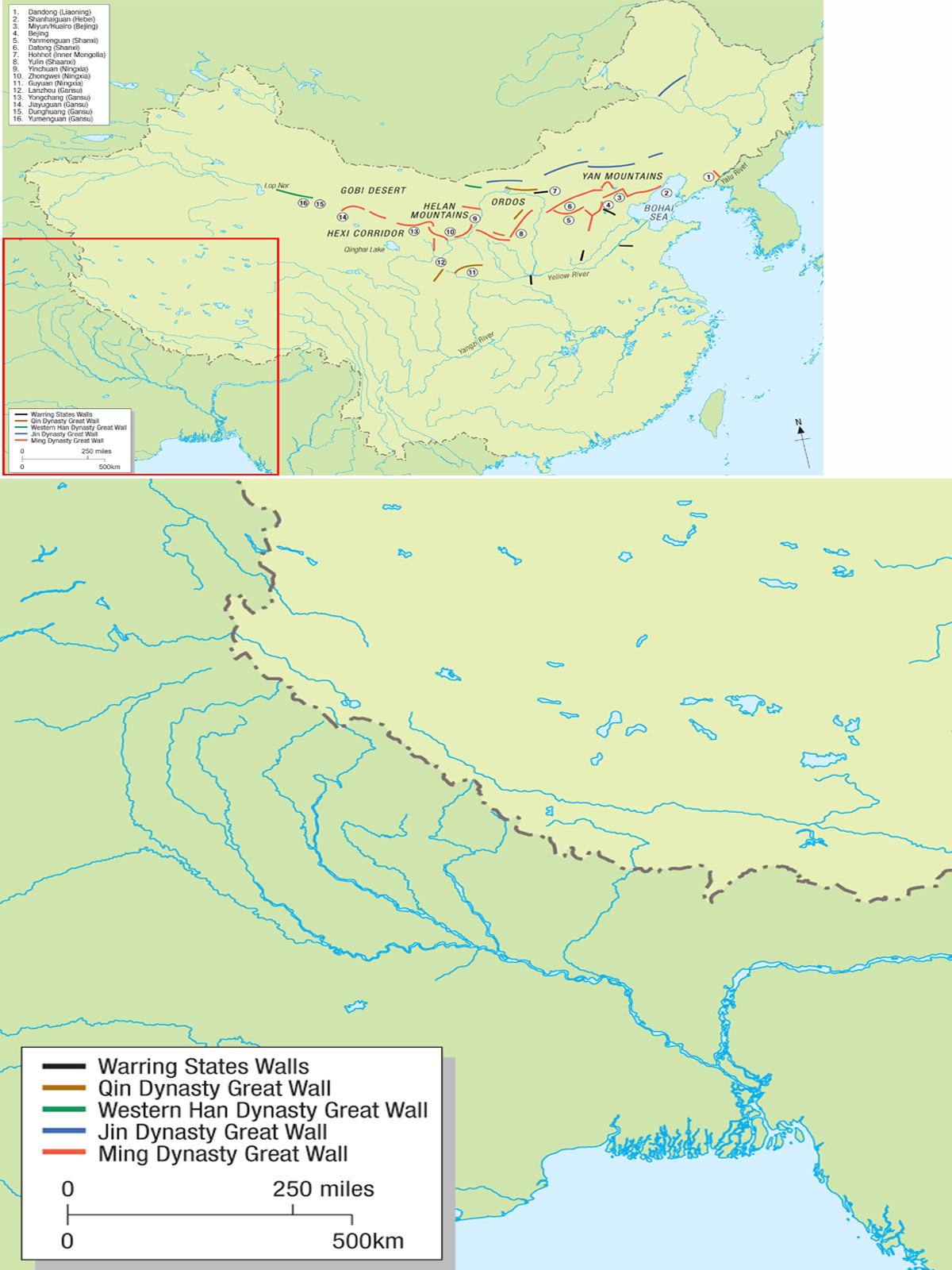

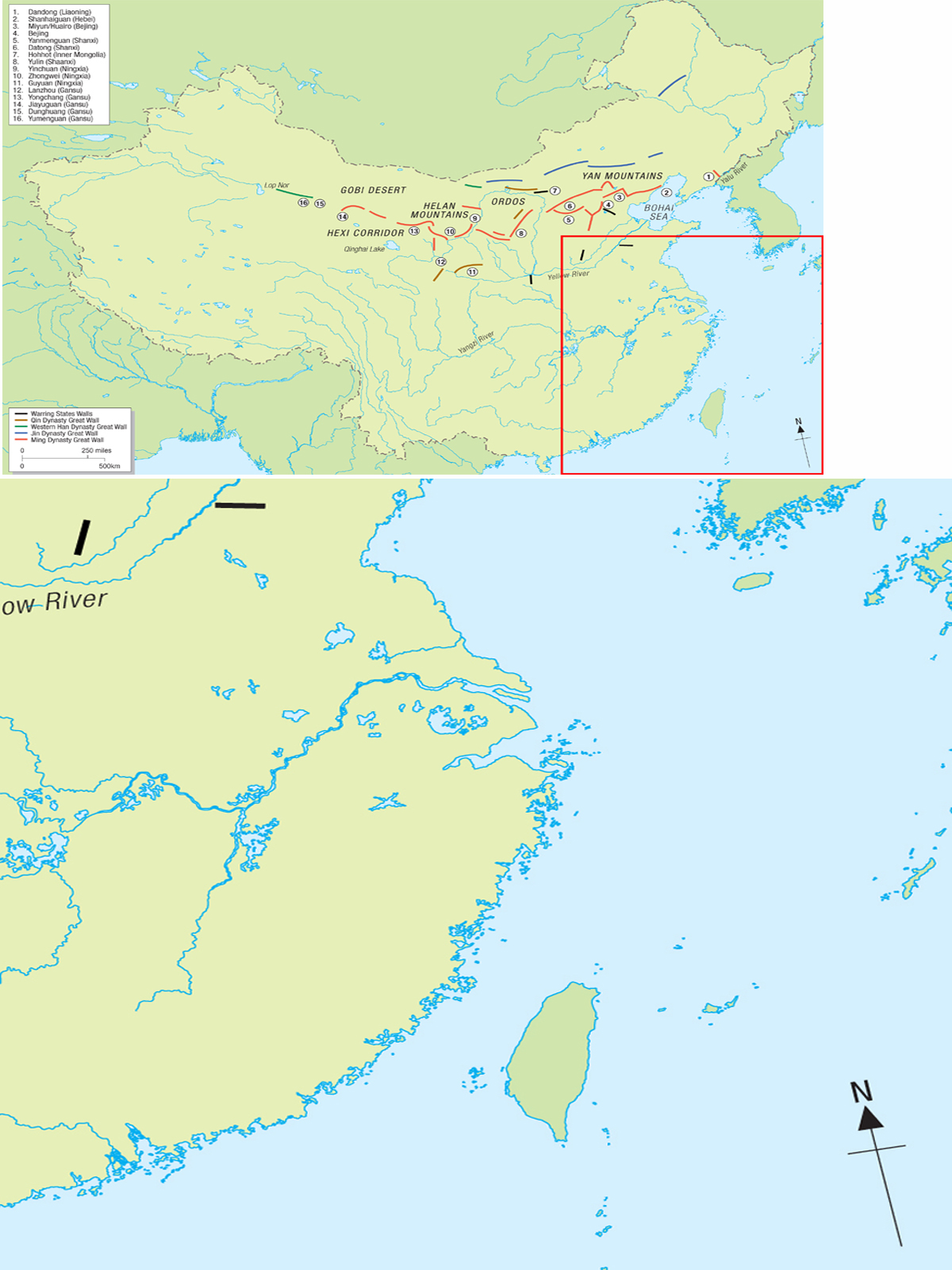
The approximate locations of the surviving sections of the walls built by different Chinese dynasties that go to make up the structure known as the Great Wall of China. (© Copyright Osprey Publishing Ltd)
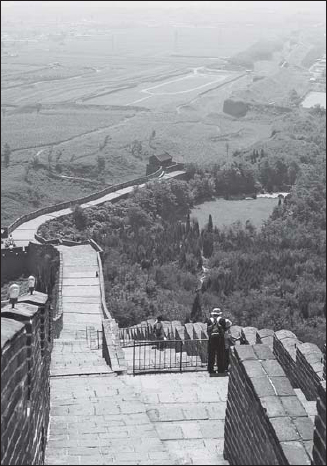
The view looking down from the Jiaoshan section of the Great Wall towards the sea across the fields towards Shanhaiguan.
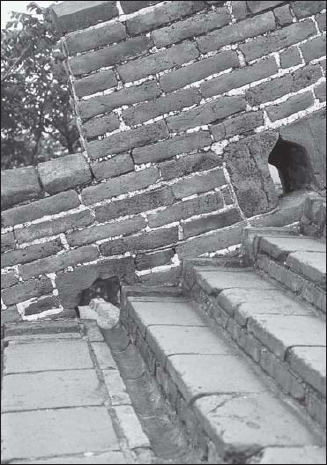
A channel for diverting rainwater and a hole for dropping rocks are seen here at Mutianyu. Note the slope of the brickwork
Huangyaguan also makes an excellent visit. The wall soars up on either side of the pass and can be climbed with moderate effort. The Ming barracks have been restored and now house museums and a hotel: the perfect place to stay the night on the Great Wall itself. The Gubeikou, Simatai and Jinshanling sections are partly restored and provide the whole spectrum of Great Wall construction through their crumbling sections and broken towers that look like cutaway sections. Long hikes in either direction are possible. Mutianyu provides the finished product. All the restored brickwork is very neatly done, and the plain interiors of the various towers are very atmospheric. Mutianyu also has some of the most attractive landscape immediately around it. Badaling is the place most tourists visit if their holiday includes just one trip to the Great Wall and, although famously crowded, a short walk takes one away from the hordes. Juyongguan is not far away, and may be combined with a visit to Badaling.
The passes at Pingxingguan, Zijingguan and Niangziguan contain preserved features of Great Wall construction. Yanmenguan and Yulin are also of great interest, but are not of easy access to the independent traveller. Some tours incorporate Jiayuguan within a long Silk Road itinerary.